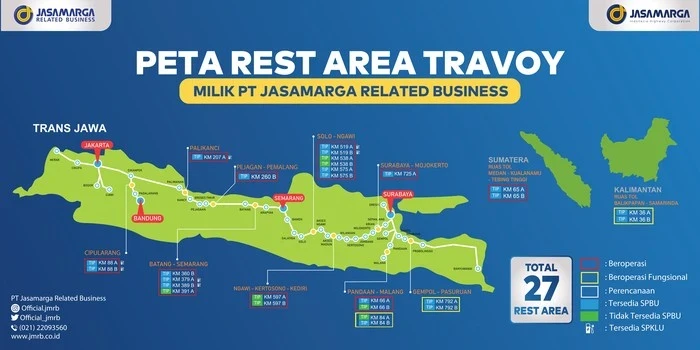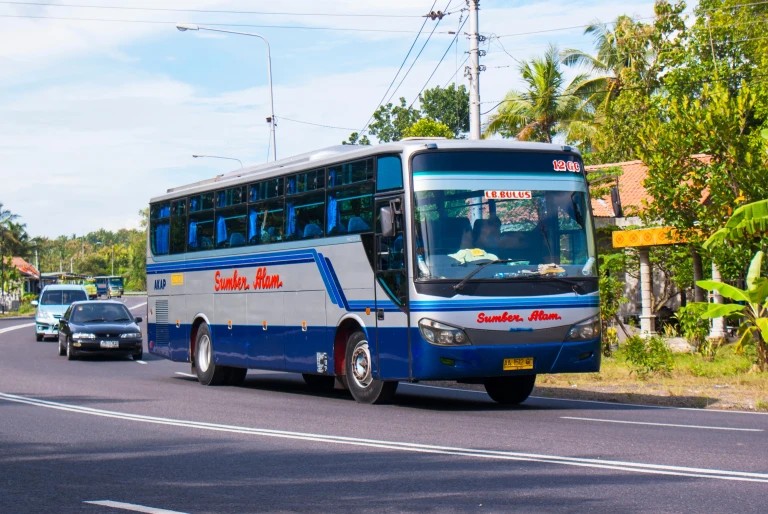Currently, the Trans-Java Toll Road for four-wheeled vehicles (ind. Jalan Tol Trans Jawa - JTTJ) is in the process of being completed – they are finishing the last section, while the main part, which is already operational, is actively used. The highway begins at the port of Merak in the city of Cilegon on Java's western coast, runs through Jakarta, and crosses the island horizontally from west to east with branches into several major cities. A ferry runs from Merak to the Sumatran port of Bakauheni.

Thanks to this route, it is possible to travel from Bali to Sumatra by land through Java in less than a day (excluding stops and overnight stays). The highway is one of Indonesia's most important transport arteries. Its convenience is highly valued by both travelers and logistics companies engaged in goods delivery.
It's no secret that the Island of the Gods is mainly focused on the tourism industry and has few large-scale productions. Most food and consumer goods are supplied to Bali from neighboring islands. The existence of a fast toll road allows for the delivery of perishables in the best condition, ensuring your online orders arrive on time.
Moreover, even in its unfinished state, this highway allows one to reach Surakarta from Bali, for example, in just 15 hours of continuous driving. This makes it more than feasible to organize a family road trip from one island to another. Driving on the toll road is a pleasure! It’s best to plan the journey with overnight stops. This way, you can ensure that you stay attentive and energized behind the wheel. For example, if you're traveling from Bali to Surakarta or Yogyakarta, it makes sense to spend the night in Banyuwangi and continue your journey on Java in the morning. If traveling from Bali to Jakarta, you might stay overnight twice – in Banyuwangi and Salatiga. In such a long journey, it's best to be guided by your own condition. Based on our family's personal experience traveling from Jimbaran (Bali) to Magetan (border of East and Central Java), a sample travel plan with two drivers taking turns looked like this:
12:00 - Departure from Bali.
17:00 - Rest and dinner stop near the Gilimanuk ferry.
19:00 - Board the ferry.
21:00 - Overnight stop in Banyuwangi.
6:00 the next day - Breakfast and departure.
12:00 - Lunch and rest.
16:00 - Arrival in Magetan.

The section of road between Jakarta and Surabaya has been operational for more than 5 years, with construction continuing on other parts of the highway.
The JTTJ road currently operates from Merak to the Probolinggo Kraaksan exit, after which the journey must continue towards the Ketapang port on ordinary roads, with accompanying traffic jams and congestion. The most intense traffic on the toll road in East Java is around the provincial capital of Surabaya and its suburbs, while east of Surabaya, the road is practically deserted. Along the entire stretch of the route, there are rest areas with free parking, toilets, shops, and cafes, making a road trip across Java convenient and comfortable.

Currently, construction is ending on the Probolinggo-Banyuwangi section. This planned section of the toll highway is 176.40 km long. During the administration of Indonesia's 7th president, Joko Widodo (Jokowi), this section of the toll road was included as part of a National Strategic Project.
The construction of the toll road is divided into two phases, with an investment cost of around 23.39 trillion rupiahs. Phase I is the Gending-Besuki section, 49.7 km long, while Phase II is the Besuki-Banyuwangi section, 126.72 km long.
Phase I of the construction is further divided into several sections. As of January 2025, in the Gending-Kraaksan section (12.88 km), land acquisition is 100% complete and construction is 15.01% complete. The construction of this section is planned to be finished in the first quarter of 2025.
On the second section, Kraaksan-Paiton (11.20 km), land acquisition is 97.4% complete and construction is 69.6% complete. This section is expected to be completed by the second quarter of 2025.
Next is section 3, Paiton-Besuki (25.6 km), divided into two work complexes: Paiton-Banyuglugur (9.40 km) with 100% land acquisition and 56.1% construction, and Banyuglugur-Besuki (16.20 km) with 98.9% land acquisition and 56.1% construction. Its completion is planned for the third quarter of 2025.
Construction of the 126-kilometer section Besuki-Banyuwangi has not yet begun, so predicting its completion timeframe is premature. However, it is already evident that thanks to the existence of high-speed roads, travel from Bali to Sumatra by car through Java is becoming routine for both domestic and international tourists.


You can add one right now!